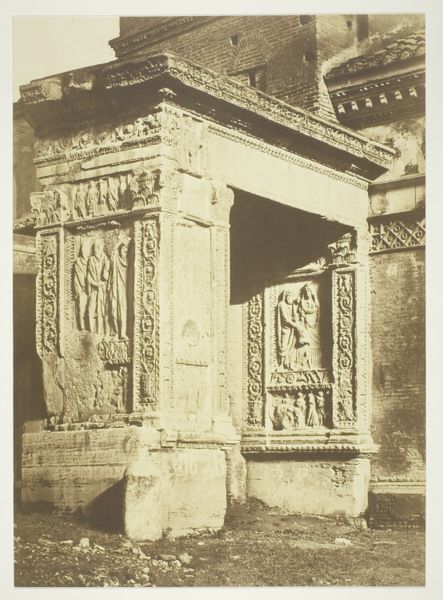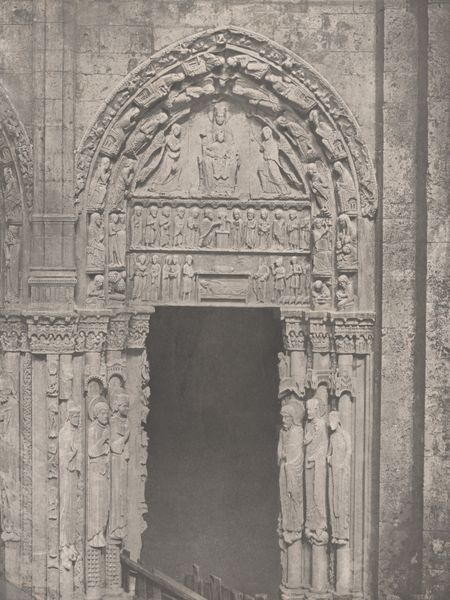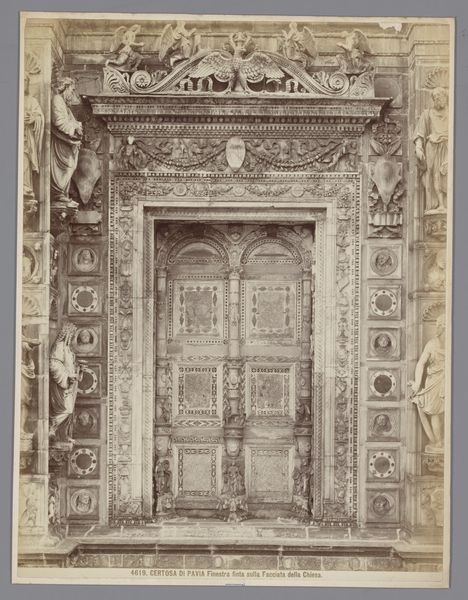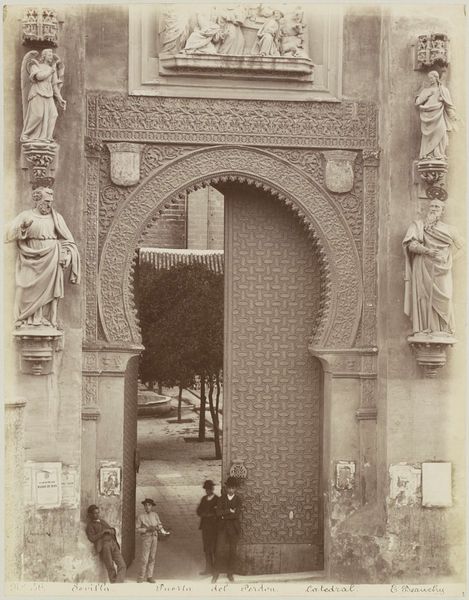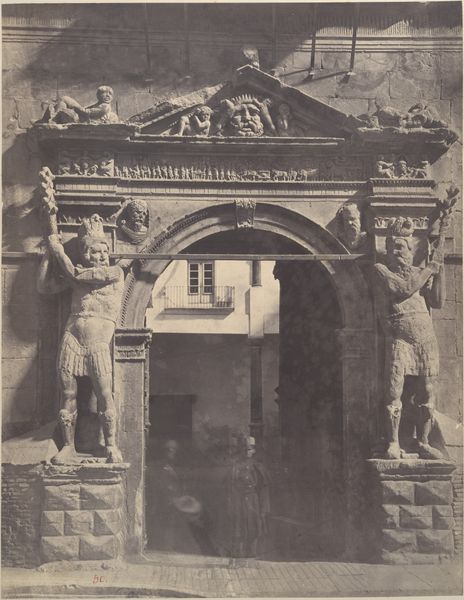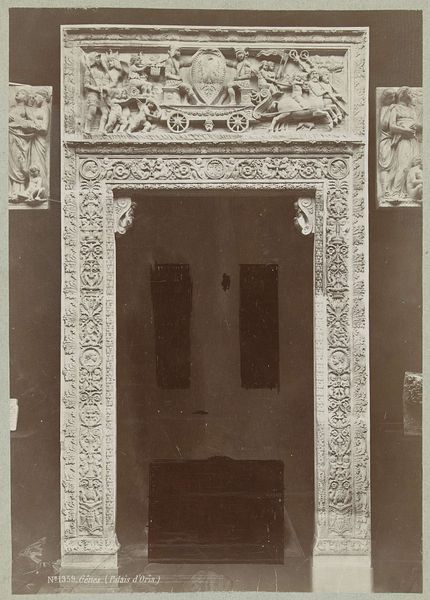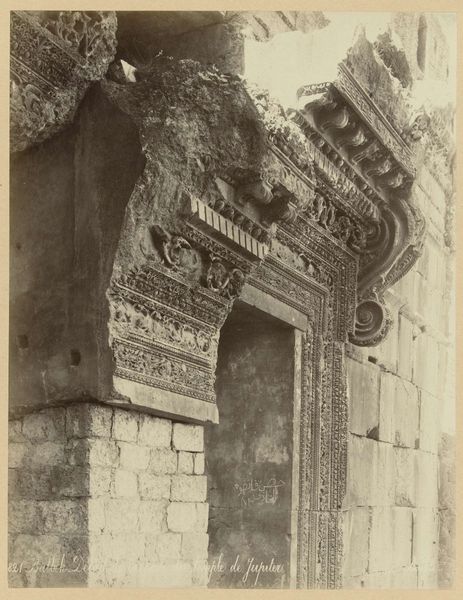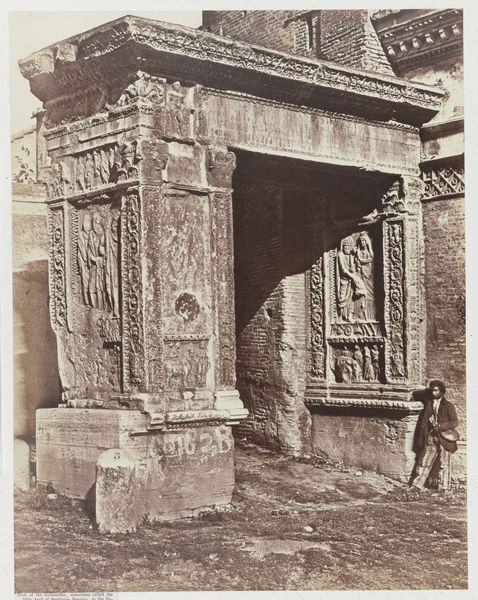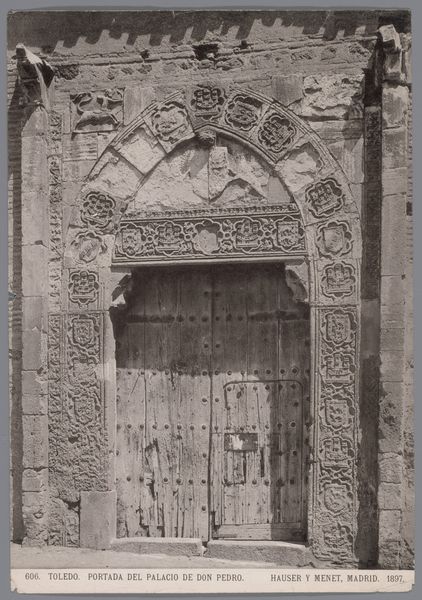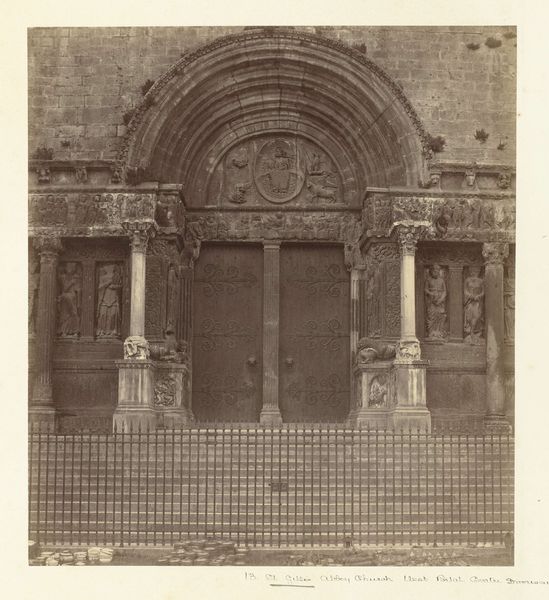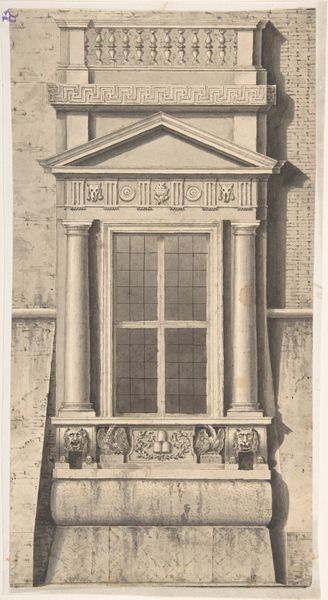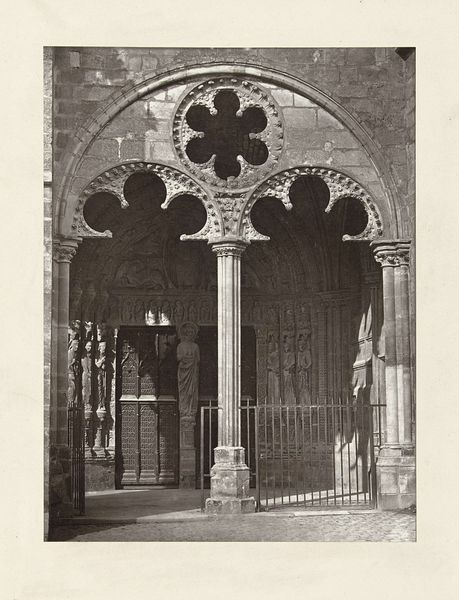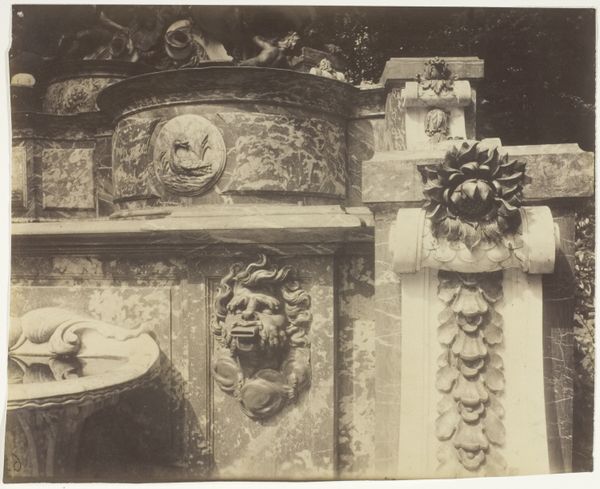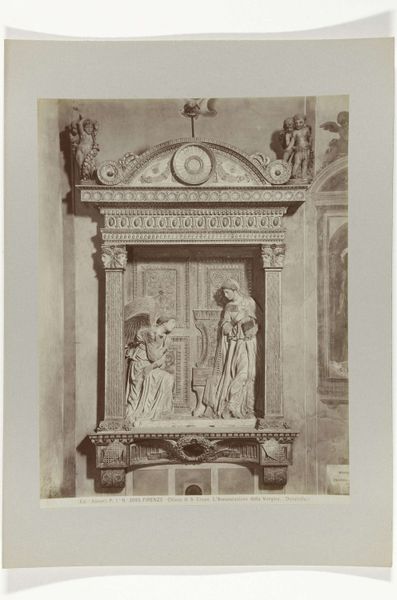
etching, bronze, photography, sculpture
#
portrait
#
medieval
#
etching
#
sculpture
#
bronze
#
historic architecture
#
traditional architecture
#
photography
#
romanesque
#
sculpture
#
19th century
#
historical building
Dimensions: height 354 mm, width 251 mm, height 433 mm, width 299 mm
Copyright: Rijks Museum: Open Domain
Curator: Here we see a photograph titled "Portaal van de Notre-Dame du Port, Clermont-Ferrand," dating from between 1870 and 1894. It’s currently housed here at the Rijksmuseum. Mèdèric Mieusement is the artist behind it. Editor: What strikes me immediately is the sheer weight of history pressing down from that arch. The intricate carvings seem almost trapped in time. The sepia tone just adds to the sense of aged solidity. Curator: Exactly. Mieusement, as a photographer, was quite interested in documenting and preserving historical monuments. We see here the Romanesque architecture so prevalent in that era, not just represented, but practically revered through his lens. Photography during that time was inextricably linked with historical and political discourse. Editor: It’s almost sculptural, isn't it? The shadows and light give it this almost tactile presence. It’s a little ghostly, though. A building within a building. Do you think he staged this somehow? Or is that what he really found? Curator: Mieusement would have certainly considered his composition; the viewpoint, light, and shadow were tools. The photograph becomes less about straightforward representation, but instead it aims at conjuring a specific reading and mood of the historical place in its moment of perceived decline as medieval forms gave way to the modern, industrial city. Editor: There’s almost something tragic about the solemnity. It speaks to this almost tangible idea of loss. Perhaps Mieusement hoped to preserve a moment of time—forever embalmed. Curator: The photograph makes explicit the relationship between photography and institutional authority in 19th-century Europe as they worked together to preserve an idealized, ordered image of France’s patrimony. Editor: I never thought about this as political! This brings a lot to unpack… So, what you are suggesting is the rise of photography parallels this need to remember the pre-industrial age with certain monument symbols? It's so great how this rather cold facade becomes this symbol of resilience. Curator: Yes. By emphasizing this specific period and framing, he subtly influences our understanding and elevates specific types of structures, and what these buildings stood for in the imagination of the post-revolutionary nation-state, imbuing it with significance. Editor: I think next time, I’ll approach old photographs from this perspective… There is such beauty here but understanding the context certainly makes this even more impactful. Curator: Indeed. The role of museums, galleries, and even photographs, becomes ever more prominent with understanding what's behind their intention.
Comments
No comments
Be the first to comment and join the conversation on the ultimate creative platform.
